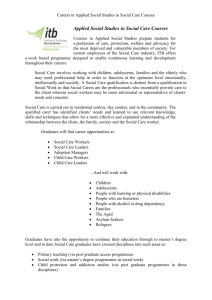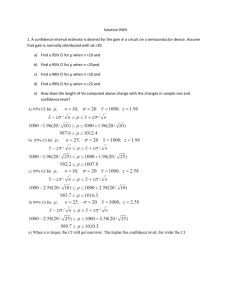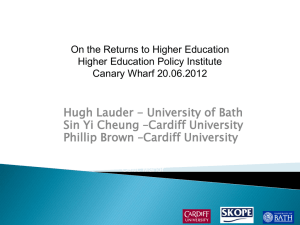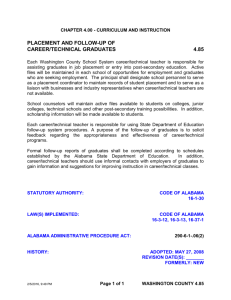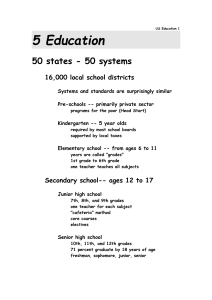Központi DPR
advertisement
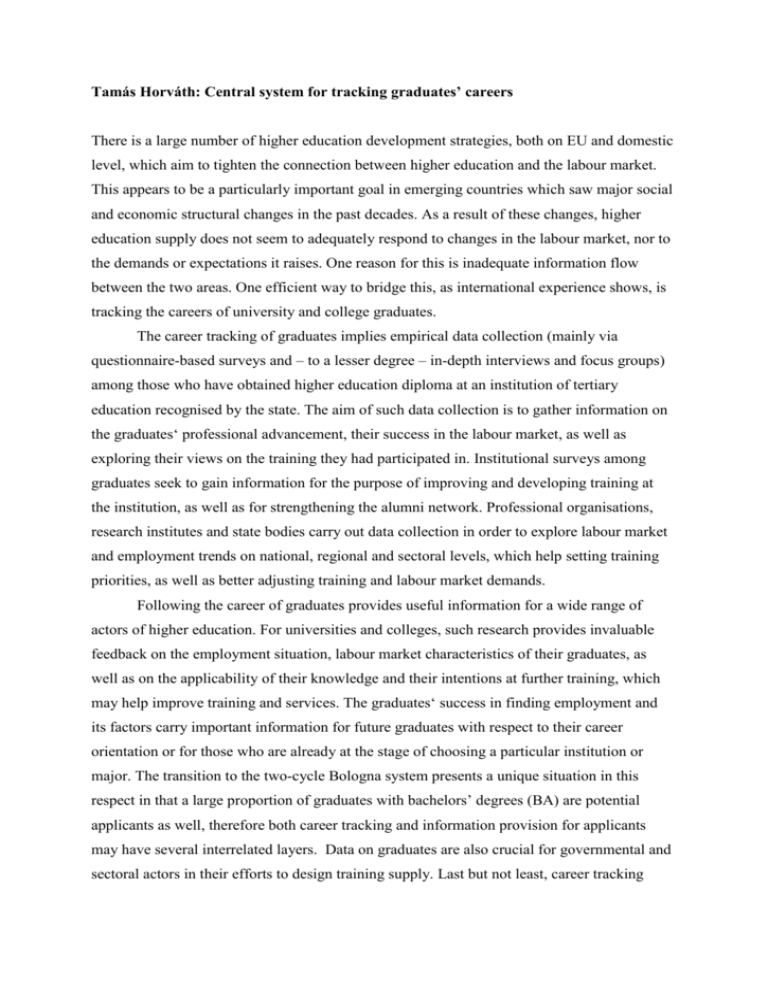
Tamás Horváth: Central system for tracking graduates’ careers There is a large number of higher education development strategies, both on EU and domestic level, which aim to tighten the connection between higher education and the labour market. This appears to be a particularly important goal in emerging countries which saw major social and economic structural changes in the past decades. As a result of these changes, higher education supply does not seem to adequately respond to changes in the labour market, nor to the demands or expectations it raises. One reason for this is inadequate information flow between the two areas. One efficient way to bridge this, as international experience shows, is tracking the careers of university and college graduates. The career tracking of graduates implies empirical data collection (mainly via questionnaire-based surveys and – to a lesser degree – in-depth interviews and focus groups) among those who have obtained higher education diploma at an institution of tertiary education recognised by the state. The aim of such data collection is to gather information on the graduates‘ professional advancement, their success in the labour market, as well as exploring their views on the training they had participated in. Institutional surveys among graduates seek to gain information for the purpose of improving and developing training at the institution, as well as for strengthening the alumni network. Professional organisations, research institutes and state bodies carry out data collection in order to explore labour market and employment trends on national, regional and sectoral levels, which help setting training priorities, as well as better adjusting training and labour market demands. Following the career of graduates provides useful information for a wide range of actors of higher education. For universities and colleges, such research provides invaluable feedback on the employment situation, labour market characteristics of their graduates, as well as on the applicability of their knowledge and their intentions at further training, which may help improve training and services. The graduates‘ success in finding employment and its factors carry important information for future graduates with respect to their career orientation or for those who are already at the stage of choosing a particular institution or major. The transition to the two-cycle Bologna system presents a unique situation in this respect in that a large proportion of graduates with bachelors’ degrees (BA) are potential applicants as well, therefore both career tracking and information provision for applicants may have several interrelated layers. Data on graduates are also crucial for governmental and sectoral actors in their efforts to design training supply. Last but not least, career tracking provides useful information for actors of the labour market on the training provided at higher education institutions. These wide ranging benefits are part of the reason why career tracking has a prominent place in the New Hungary Development Plan (Új Magyarország Fejlesztési Terv) and within that, the Social Renewal Operative Programme (a Társadalmi Megújulás Operatív Program, TÁMOP). The goal, on the one hand, is to see this activity – as a kind of a service – spread as widely as possible among higher education institutions and, on the other hand, to ensure the professional basis and high level of career tracking based on international and Hungarian practice. The designers of the programme believe that adopting an adequate practice may greatly enhance the competitiveness of institutions and contribute to the quality-driven development of Hungarian higher education. The 2005 Higher Education Act stipulates that every university and college is obliged to carry out career tracking, however, we have witnessed only few, sporadic examples of such activity, mainly as spontaneous initiatives of the institutions. Beside sectoral interests, the development of central and institutional systems of career tracking is justified by the fact that the current practice of career tracking in Hungary is still rife with many internal weaknesses. Often this can be put down to the absence of adequate professional background to, and sustainable institutional model of, career tracking. As a result of this, there is only scarce evidence of professionally and methodologically well-founded institutional career tracking systems with secure financing, there are only few well-working alumni programmes, in addition, graduates are only loosely tied to their educational institutions after graduation, therefore their response rate lags behind, not to mention the inadequate integration of career tracking both from an organisational, as well as IT point of view. The TÁMOP Programme No. 4.1.3. titled „Systematic development of higher education services“, together with its institutional tender component, TÁMOP 4.1.1., seek to tackle these shortages. The programme aims to provide central services and professional support for institutions to carry out career tracking with financial support from grants. The central career tracking programme therefore is not a national, centrally controlled, statistical survey but should be seen primarily as a professional development programme aiming to support institutional career tracking by creating the basis for their long term operation. To this end, consideration had to be given to the strengths and weaknesses when elaborating the central and institutional programmes. Drawing on a thorough and multi-layered stock-taking, a central programme may allow the elaboration of an efficient and methodologically well- founded institutional model; the integration of the graduates‘ data with other, labour-related databases; as well as increasing the acceptance and prestige of career tracking through intense dissemination activity. The strength of institutional career tracking, in turn, lies in the fact that – building on the graduates‘ ties to their former institutions as a result of alumni activity – institutions are able to establish direct contact with their graduates, while they can also formulate their demands as to information about their graduates. In light of the above, the career-tracking programme carried out under TÁMOP 4.1.3. has a two-fold purpose. On the one hand, it seeks to elaborate a comprehensive and sustainable model of career tracking and provide support for the institutional projects and developments. Stages of the elaboration of the DPR institutional model Stock-taking International good practices (OECD and other countries) Elaboration of an institutional model of career tracking (DPR) Manual, process management Monitoring of institutional career tracking Training, helpdesk Domestic practices International and domestic literature Needs assessment of every higher education institution Empirical studies (national and pilot surveys) Specification of SROP Tender 4.1.1. for institutions • Database of information and knowledge • Good practices • Case studies • Conference • Publications Professional support for institutional programmes „Audited” institutional career tracking system based on unified methodology Monitoring, assessment Beside the key research and methodological questions, the recommended institutional model address two other important pillars: the necessary organisational background of career tracking studies and their embeddedness within the institution on the one hand, which include questions of professional competence, the direct returns form career tracking and the appearance of some of its element in strategies and development plans, data protection, and the IT background. On the other hand, internal and external communication and of the career tracking programme and its form is crucial in order to convey the results to all stakeholders. The horizontal goal of the institutional model, that is, the goal that is set for every activity of the programme are ensuring sustainability, including financial (sale and sponsorship), institutional-organisational (feedback, regulation) and personal-professional aspects (human resources, necessary professional competences). A further goal of the central career tracking system is to provide a service which has long been missing from the higher education sector: supplying up-to-date and wide-ranging information on the trajectories of graduates through the integration of central databases. The programme allows comparison between higher education institutions with respect to their labour market output, which may greatly contribute to the quality development of higher education and increasing the competitiveness of the institutions involved. This is made possible by the integration of the Higher Education Information System (Felsőoktatási Információs Rendszer, FIR) and other, labour related databases containing information on graduates’ employment characteristics (type and location of the workplace, job, income), in line with data protection regulations. Beside systematic monitoring, institution-based career tracking, if accompanied by a one-time professional and technological development, can regularly provide datasets for institutions on the employment and labour market experience of the graduates. It is important to emphasize that we do not talk of personal data here but statistical aggregates, therefore the central DPR database so established will provide information on institutions, faculties or even majors and not the labour market characteristics of individual graduates. An additional goal of the central graduate career tracking programme is closely linked to the abovementioned ones: it seeks to ensure that a wide range of information is collected for actors of higher education on completing a degree, finding employment and careers, which is made available for those interested. This necessitates technology and informatics background to ensure information flow between the central and institutional systems.



